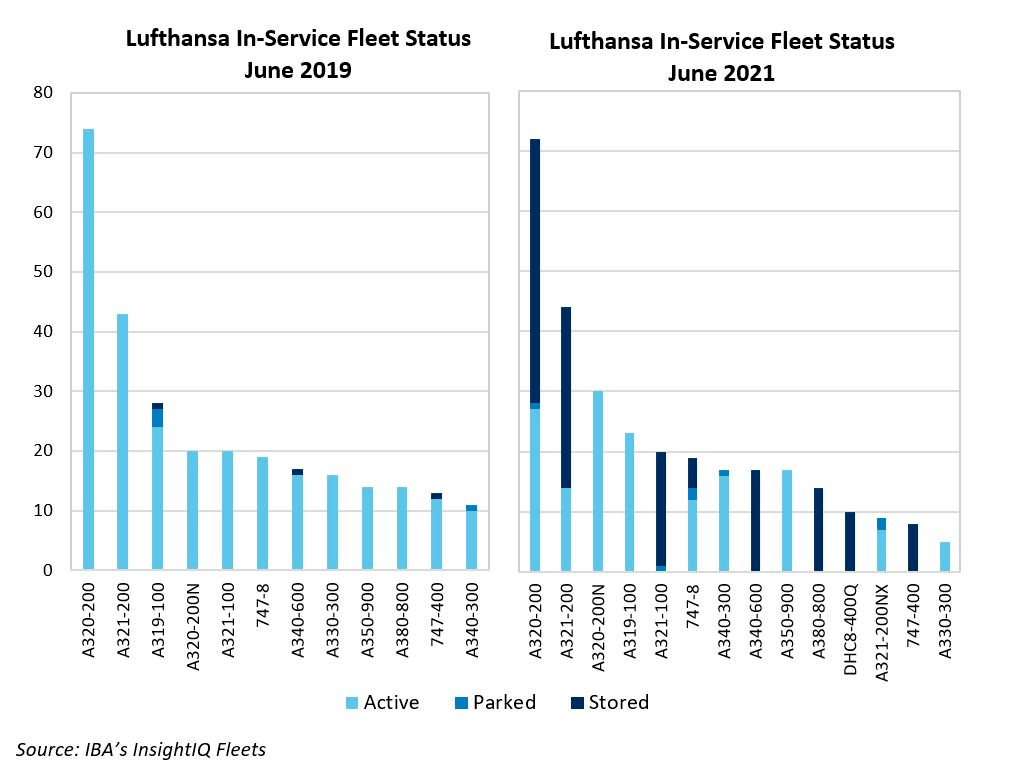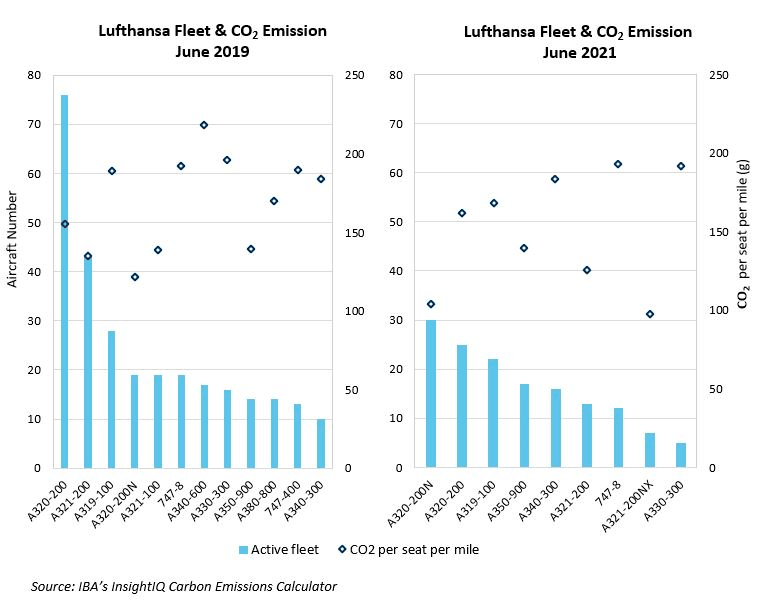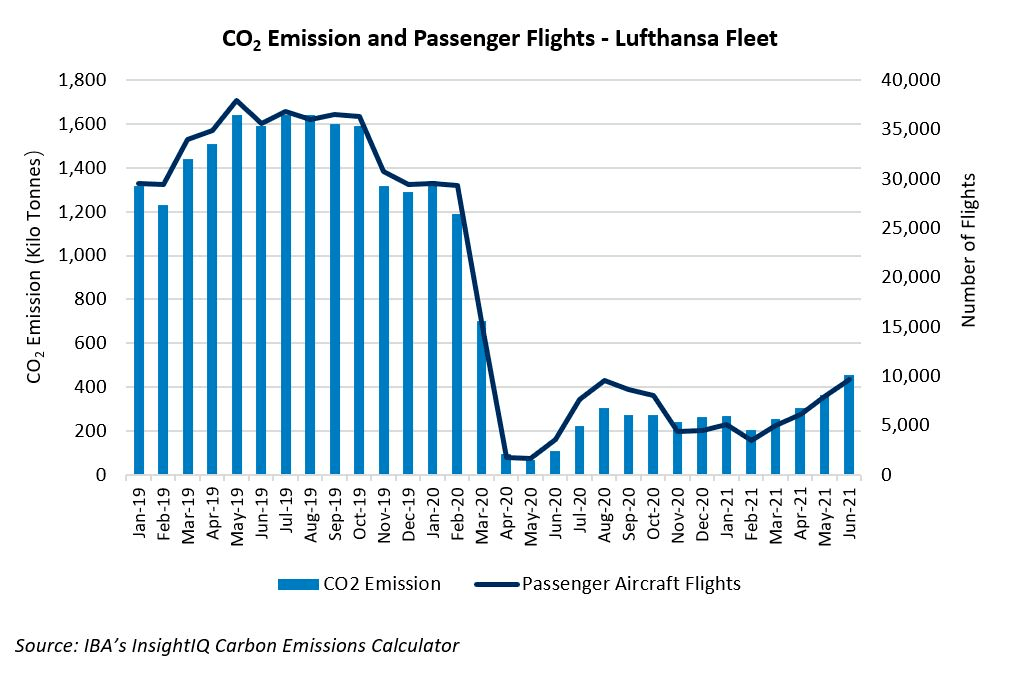06/07/2021
Intelligence from IBA's InsightIQ Carbon Emissions Calculator has identified a significant drop in Lufthansa's Carbon footprint, driven by an aircraft evolution strategy across the passenger fleet.
The percentage of active aircraft in the Lufthansa fleet stood at approximately 52% in June 2021, a stark comparison to 98% in the pre-pandemic conditions of June 2019. Whilst a significant percentage of the passenger fleet remains parked or stored*, specific newer generation models have been utilised during the Covid19 crisis. The A320 NEO and A350 are standout examples, achieving up to a 100% active ratio. The pandemic has resulted in high storage ratios for the A320 CEO, and early retirements of the Boeing 747-400, Airbus A340-600 and Airbus A380 types. IBA will continue to closely monitor the movements of those types and provide analysis and intelligence.
*We define the grounding period of over two weeks and less than three months as being parked, and three months and above as being stored.

Market forces, maintenance costs and gradually rising oil prices have clearly driven this shift change towards more modern, fuel efficient aircraft such as the A220, A320 NEO, A350, 787 and 737 MAX.
According to combined data from IBA's InsightIQ Carbon Emissions Calculator and Fleets module, we have observed that these aircraft are actively contributing to the reduction of carbon emissions, a significant objective for most airlines.
According to data published in our recent Aviation Environment Report, commercial aircraft account for around 2-3% of global emissions. As such, the switch to more efficient aircraft is a natural strategy to meet carbon reduction targets. This, combined with the historically low levels of passenger traffic due to Coronavirus, has driven a dramatic reduction in CO2 emissions.

The Airbus A320neo generates 22% less CO2 emissions than its predecessor in the same configuration and on the same route.
The Airbus A350-900 aircraft with the same seat layout produces up to 33% CO2 than the A330-300 aircraft on the same route.
Generally speaking, narrowbody aircraft are more environmentally friendly than the widebody aircraft (based on the same configuration and route mileage) Therefore, increasing the range of single aisle aircraft for long-haul routes is a feasible strategy to reduce an airline's carbon footprint. Lufthansa appear to have implemented such a strategy, with the A320 NEO being utilised on longer routes to Reykjavik, Cairo, Moscow and the Canary Islands. Despite this, it should be noted that longer routes mean more time spent in the cruise, and have a further effect on overall emissions.

The onset of the pandemic saw the most significant drop in Lufthansa's passenger flight numbers. This statistic was echoed globally, with the 95% YoY drop from April 2019-April 2020 driving a corresponding 93% reduction in Carbon Emissions. Whilst the total number of passenger flights has tripled from April 2020 to June 2021, we are still observing figures around 70% less than before the pandemic.
The positive carbon impact of low aircraft utilization will gradually subside as the aviation industry recovers from the pandemic. It is clear that ongoing fleet renewal programs will play a key role in cutting CO2 emissions at Lufthansa and numerous other comparable airlines.
If you have any further questions please contact Jie Zhou.

InsightIQ's Carbon Emissions Calculator (CEC) is the only finance-focused carbon modelling tool currently available; it's leading the way. The CEC benefits from IBA's proprietary fuel-burn data which, integrated with InsightIQ's Flights and Fleets module, can illustrate carbon emissions by any combination of: time period, airline, lessor, aircraft MSN and model, portfolio, OEM, country, airport and route pair. Request a free demo to discover how InsightIQ can shape your CO2 reduction strategy.